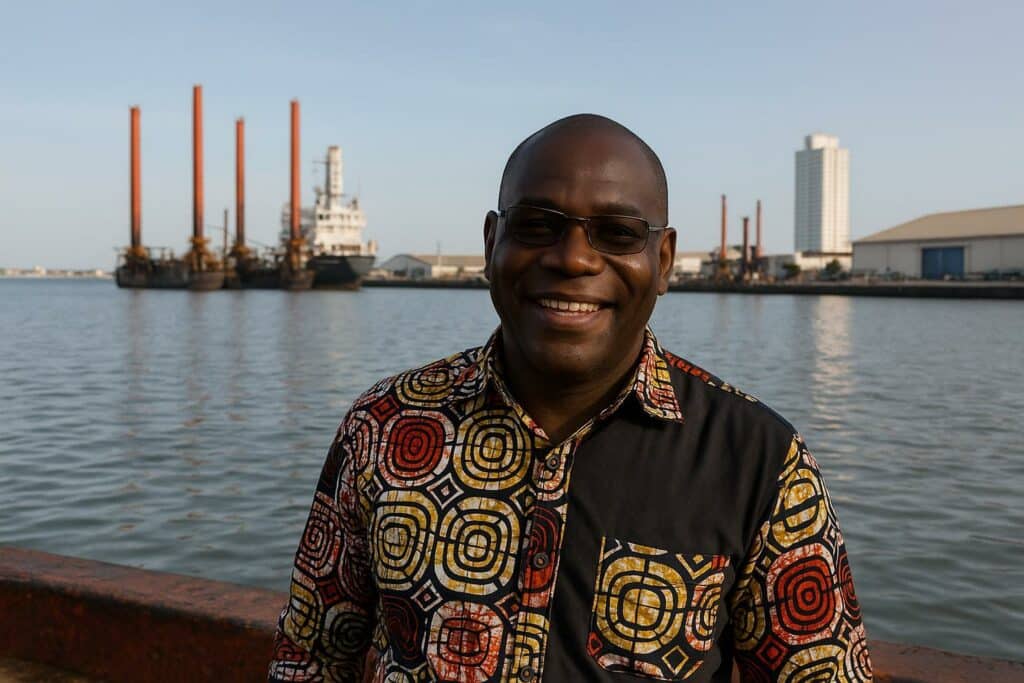A Historiographical Enigma That Shapes Regional Memory
More than a millennium after he forged the formidable Kongo polity, Mani Kongo Nimi Lukeni remains a liminal figure whose biography blends oral epic, royal propaganda, missionary reports and modern scholarly conjecture. For Brazzaville, Luanda, Kinshasa and Libreville alike, the king’s lineage is not a mere antiquarian curiosity: it crystallises questions of cultural prerogative, borderland legitimacy and intangible heritage management in a sub-region where history still undergirds statecraft. Congolese historians such as Abraham Constant Ndinga Oba argue that three complete dynastic cycles separated Lukeni from the Christian convert Nzinga-a-Nkuwu, suggesting a ninth- or tenth-century horizon for his reign, a chronology broadly consistent with John Thornton’s long-term models of Kongo state formation (Thornton 2001).
Onomastics and Clanonymics: The Kuni Hypothesis Gains Traction
Contemporary debate has turned to linguistics for fresh adjudication. In Kuni dialects of the Niari Valley, the verb ku tsunda—“to begin” or “to fashion”—appears to underlie the toponym Nsundi, one of the earliest Kongo provinces. Similar correspondences link the hydronym Niari to a putative source form Nsundi Niadi, allegedly simplified by nineteenth-century European cartographers who adapted Bembe phonology. Moreover, among Kuni speakers the birth name Nimi is reserved for the second-born male twin, while his elder brother is styled Ngo, evocative of the panther that symbolised royal potency across western Bantu chieftaincies. Such precise semantic coding, Christian Roland Mbinda Nzaou contends in a recent unpublished memorandum, is difficult to dismiss as coincidence.
Echoes of Semitic Twin Motifs and Comparative Anthropology
Diplomatic analysts might be tempted to dismiss philological minutiae as parochial, yet the stakes are comparable to those that animate Old Testament exegesis in the Middle East. Kuni naming conventions replicate, almost eerily, the Jacob-and-Esau template of a virile hunter and a more strategic younger sibling. While no diffusionist thesis should be overstated, the parallel underscores the sophisticated symbolic system through which emerging Kongo elites legitimised succession, trade expansion and tributary integration—issues that modern statesmen would recognise in contemporary regional negotiations.
Yombe, Nsundi and the Problem of Competing Memories
Not all scholars rally behind the Kuni proposition. Oral historians among the Yombe communities of Vungu—situated on the right bank of the great river—insist that Nimi Lukeni descended from a Muyombe aristocracy whose metallurgical expertise furnished the military edge necessary for early conquest. Belgian ethnographer Jan Cuvelier recorded rituals at Mbanza Vungu venerating a royal ancestor they equate with Lukeni. Meanwhile, Nsundi elders cite their province’s etymological prestige and point to Lukeni’s alleged daughter Nzinga, whose name evokes the circular umbilical cord motif, as evidence of an origin further north. UNESCO-sponsored excavations led by archaeologist Anne Hilton at Kingoyi and Louvakou have unearthed iron-smelting debris datable to the tenth century, yet isotope analysis does not conclusively attribute the finds to one lineage or another.
Challenging the Yaka Disruption Narrative
A recurrent anecdote credits Lukeni’s downfall to Yaka incursions from the east, a scenario incorporated into school textbooks during the colonial period. Chronological scrutiny, however, reveals that major Yaka migrations materialised only after 1550, well after the Portuguese contact of 1482 and six centuries after Lukeni’s lifetime. The persistence of this anachronism illustrates how colonial and missionary historiography often projected sixteenth-century turbulence backwards to rationalise Atlantic slave-raiding alliances. Modern Congolese academics, including Marcel Samba in Brazzaville and Joseph Titi of the Evangelical Church, advocate for a methodological reset that separates genuine early-medieval memory from post-contact layers of distortion.
Where Might the First Mani Kongo Rest?
The question of Lukeni’s burial site carries symbolic weight comparable to that of a national mausoleum. A strong oral strand places the tomb somewhere along the Lukeni-ni-Niari stream near Lubetsi mission, only five kilometres from Kibangou on today’s National 3 highway. Yet royal funerary norms of the era mandated secret interment within the territorial heartland to prevent potential desecration by rival claimants. Given that Lukeni’s imperium ultimately encompassed swathes of present-day Angola, both Congos and southern Gabon, any attempt at localisation must confront an expansive geography. The absence of monumental stone architecture further complicates remote sensing, although ground-penetrating radar surveys proposed by the Congolese Ministry of Culture for the 2025–2028 cycle could yield decisive data without intruding on sacred customary landscapes.
Toward a Multidisciplinary Roadmap for Future Inquiry
Diplomatic actors and international development agencies have an opportunity to underwrite a collaborative research platform that integrates linguistics, archaeogenetics and paleoenvironmental reconstruction. Such a project would not only clarify a seminal chapter of Central African statecraft but also strengthen cultural-diplomatic ties by foregrounding a shared imperial ancestor rather than antagonistic border narratives. In an era when heritage diplomacy increasingly informs soft-power projection—from the Benin Bronzes to Nubian temples—the quest to situate Nimi Lukeni historically and geographically offers Congo-Brazzaville a constructive avenue to promote regional cohesion while affirming national pride. What remains indisputable is that the legend of the first Mani Kongo continues to animate scholarly curiosity and political imagination alike, ensuring that his glittering title Lukeni, evocative of iridescent scales, still captures the region’s enduring fascination with its own illustrious past.

